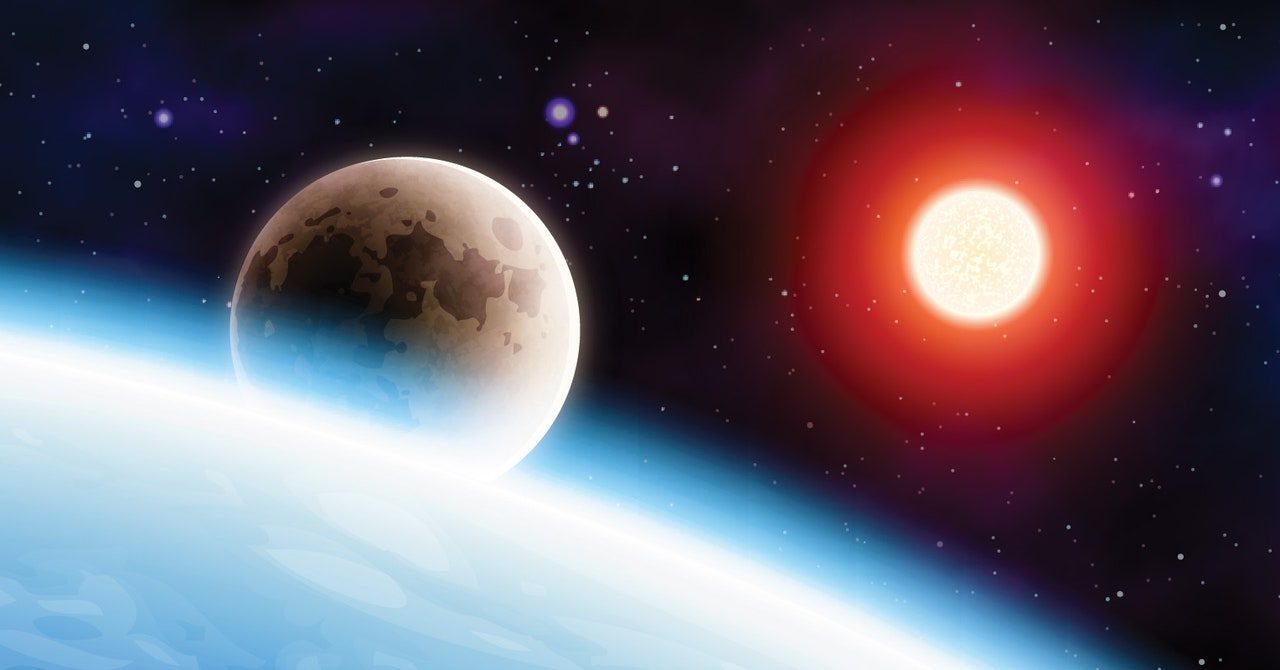Is that really true? Yup. Look, I can prove it. Here’s a plot of the trajectories of the Earth and moon as they orbit the sun over the course of half a month. The blue curve is the path of the Earth going from left to right, and the red represents the moon.
Graph: Rhett Allain
Here, position is measured in astronomical units (AU), which was originally defined as the average distance from the sun to Earth. The trajectories look flattened because I had to use different scales on the two axes, for reasons we already talked about. Trust me, it’s a circular orbit.
Now let’s look at the path of the moon. First, notice that in this half-month the moon starts on the far side of the Earth and ends up closer to the sun (that’s half an orbit around Earth). Second, at no point does the moon’s path bend away from the sun. In fact, it’s always accelerating toward the sun. And that’s because the sun’s gravitational force is stronger than the Earth’s.
So, again: Does the moon orbit the sun or the Earth? The answer is yes—it orbits both. While the moon moves around the sun, it also moves around the Earth. And it circles the Earth without curving away from the sun! That’s sort of hard to picture in your head, and the bad news is that we can’t draw an accurate diagram as an aid to understanding.
The whole problem is that, on the scale of the solar system, the Earth and moon are so close together that you can’t see their relative motion. But I’m sure textbook authors will keep trying.
Finally, for those who still think Earth and humanity are the center of the cosmos, chew on this: If our planet were to suddenly vanish from existence, the moon would just keep going, circling the sun once a year. It wouldn’t even miss us.


